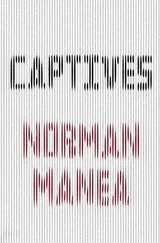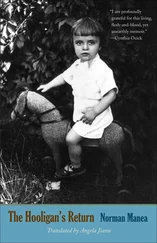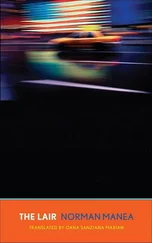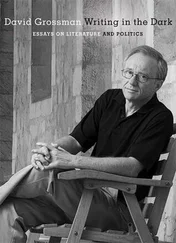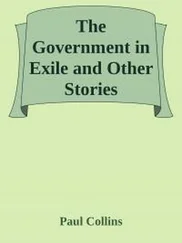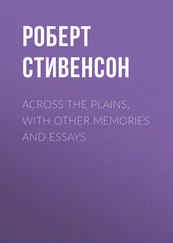The observer’s confusion lasts only a moment: then he becomes aware of the fact that this comedian has destroyed his life, poisoned his days, his and everybody else’s — this pitiful windblown vagabond, this gutter demagogue! His white mask — white as his skull. It is a feeling of humiliation to have lived so many years terrorized by a caricature — or is it grief for the human species in general?
For a moment, the observer feels unapproachably superior to this wild charade, suddenly transfigured by such crystalline incongruity — thus, an aristocrat: he, the outcast, the “artist,” already knows that he’ll have to pitch his tent elsewhere, as far as possible from this blood-drenched arena. (“He can’t say: ‘I’ll wait until the tyrant is overthrown!’ because that might take ten years, and in the meantime his creative power would wane.”)
This last confrontation lasts only a second. Then he shakes the weariness off his shoulders, out of his head and his entire body, as if wanting to rid himself of the poison that has invaded every fiber of his being.
Irreversible time, time that gives nothing back: neither the house nor the books, neither the abandoned projects nor the lost friends.
Is it possible for evil really to be embodied in such pitiful and ridiculous envoys? Does the grandiose imprint of hell manifest itself in these laughable (even if terrible) stammered pantomimes?
He isn’t even worth a curse. Nothing and No One and Nowhere — this is the summation of this catastrophe, concrete and terrible as it was.
His caricature grins from every wall of the country, the country that once embodied hope. A hope of a life, for better or worse, but a life: in the light of youth, at the time of decline, in the intoxication of love, in rebellious dreams as well as bitter disappointment. For better or worse? It was never free in any case, but it became hell only after the skeleton of this plague rose up against the firelit sky, in this carnival that glorified the future and celebrated death. He is tiny and white, the clown, a little white mouse, a carrier of the plague: a death’s-head of nothingness.
Life back there consisted of waiting, of permanent preparation for something uncertain and continually postponed. That was the life this Augustus the Fool led until yesterday. A life in permanent suspension. Now it lies behind him, ever farther behind him, and yet it has stayed with him like a wound that won’t heal; it partakes of every step he takes. A quote from the teachings of Rabbi Moshe Loeb: “The road through this life is like a razor’s edge: hell on one side, hell on the other. Between those two runs the road through life.”
What awaits this wanderer: a somersault into the void? The senselessness of new masquerades? the vulnerable post-adolescence of the aimless stranger among strangers? And what about big words, dear to children and old people and cherished by poets: freedom, conscience, dignity, bravery, sacrifice? They will do for the embellishment of gravestones.
“The loneliness of the poet — what is the loneliness of the poet?” This was a question in a questionnaire that a group of writers fond of aphorisms and wordplay amused themselves with in the first postwar years.
“A circus routine that hasn’t been announced.” That was the answer given by the young poet Paul Celan before he went into exile in the West, forty years ago.
Bard College, summer 1989
Translated by Anselm Hollo
Notes
1. Frederic Morton, “Chaplin, Hitler: Outsiders as Actors,” New York Times, April 24, 1989.
2. Ibid.
3. F. Fellini, I Clowni, Bologna: Cappeli, 1970.
4. Ornella Volta, Small Encyclopedia of the Clown.
5. Although much of the material in the preceding paragraphs was common knowledge in Romania in the later years of Ceau  sescu’s regime, the stories did not begin to be published (as far as I can tell) until after 1989 or 1990. See especially John Sweeney’s The Life and Evil Times of Nicolae Ceau
sescu’s regime, the stories did not begin to be published (as far as I can tell) until after 1989 or 1990. See especially John Sweeney’s The Life and Evil Times of Nicolae Ceau  sescu (London: Hutchinson, 1991) and István Várhegyi’s article in Die Zeit (May 1990).
sescu (London: Hutchinson, 1991) and István Várhegyi’s article in Die Zeit (May 1990).
6. Eugenio Montale, “Una poeta,” in Quaderno di Quattro anni, Mondadori, Milan, 1977.
I
When he died in 1986, in Chicago, at the age of 79, Mircea Eliade was a famous scholar of religion, the Sewell L. Avery Distinguished Service Professor in the Divinity School and professor in the Committee on Social Thought at the University of Chicago, and a well-known writer. He was the author of some fifty books, including short stories, novels, plays, essays, studies on philosophy and religion, and of countless articles. A History of Religious Ideas, in four volumes, is probably his most famous work.
Eliade’s rate of intellectual production was, from his youth, extraordinary. His work is extensive and varied, from articles on popular science to erudite, scholarly books, from cheap novels to important works of fiction, from casual comments on casual subjects to sophisticated research. A man of enormous learning, he was also a restless, “wandering” reader and writer. In his fiction, as in his scholarship, we find the same themes: the myth of the eternal return, the coincidentia oppositorum, the crisis of Western man, the sacred and the profane, the archaic roots and the cosmic feeling of the human condition, the role of ritual and myth, of magic and archetypes. The most important theme of all, probably, is the theme of initiation, and his books were stages of his own endless initiation into what he believed to be the inexhaustible mystery of the human being and the world.
Eliade’s passion for knowledge, for reading and writing, dated back to his high school years in Bucharest, where he published his first article (“How I Found the Philosopher’s Stone”) in 1921, at the age of 14. After receiving his master’s degree in philosophy in 1928 at the University of Bucharest, he went to India for three years, to study Indian culture and philosophy at the University of Calcutta. He considered it his greatest spiritual experience. “In India I discovered what I later came to refer to as ‘cosmic religious feeling,’ ” he wrote in 1978, in Ordeal by Labyrinth.
Eliade received his doctorate at the University of Bucharest in 1933, with a dissertation on Yoga. (It became a standard work on the subject.) He was appointed assistant to Nae Ionescu, famous professor of logic and metaphysics, and began his teaching with a course on “The Problem of Evil in Indian Philosophy.” Eliade was fascinated by his mentor and friend, even when Ionescu became a propagandist for Italian fascism and German Nazism, and a passionate supporter of the Iron Guard, the Romanian extreme-right and ultra-nationalist movement, a kind of Christian orthodox fundamentalism.
When some of the leaders of the Iron Guard, including Ionescu, were imprisoned, Eliade — himself a supporter of the Iron Guard — ran into trouble with the authorities, even though he was already an important figure in Romanian culture. Still, he was appointed cultural attaché to the Romanian legation in London in 1940. A year later, when Romania entered the war on the side of Germany, Eliade had to leave London, and was sent to the Romanian legation in Lisbon. When the war ended, he remained abroad, in Paris, where he taught at the Ecole des Hautes Etudes, and later at various European universities, before settling, in 1956, at the University of Chicago.
Eliade’s Journals and Autobiography cast an interesting light on his life and his work, which partook of the troubled culture of this troubled century. 1Unfortunately, they do not in any way excuse or demystify Eliade’s ideological and political history during the fascist period. Eliade once wrote, in another context, that “a [demystifying] attitude is altogether too facile,” that he preferred “the camouflage adopted by the sacred in a desacralized world.” “I made the decision long ago,” he confessed in Ordeal by Labyrinth, “to maintain a kind of discreet silence as to what I personally believe or don’t believe.”
Читать дальше
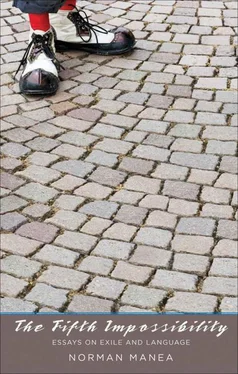
 sescu’s regime, the stories did not begin to be published (as far as I can tell) until after 1989 or 1990. See especially John Sweeney’s The Life and Evil Times of Nicolae Ceau
sescu’s regime, the stories did not begin to be published (as far as I can tell) until after 1989 or 1990. See especially John Sweeney’s The Life and Evil Times of Nicolae Ceau 